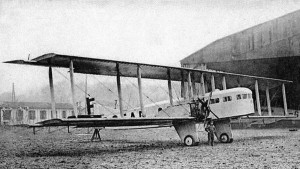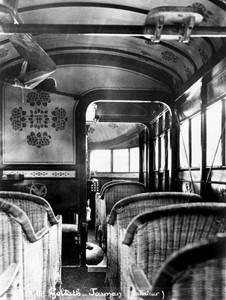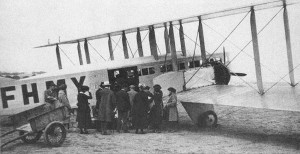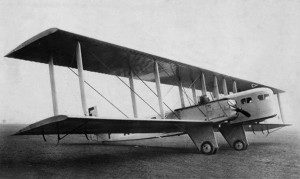Published on March 22, 2013
On this date in aviation history, March 22, 1919, the world’s first regularly scheduled international service began operations that linked two cities, Brussels and Paris, under the banner of the Lignes Aériennes Farman. Flying a mix of Farman Goliaths with Renault power (the F.61) and Gnôme-Rhone-constructed, Jupiter power (in the F.63bis), the airline took off into history — or at least a qualified history of sorts. You see, it takes a little explaining after all to truly recognize just what was achieved….

The Farman Goliath
The year of 1918 saw the debut of a new airline transport plane. The design developed from a night bomber design that didn’t make it in time to participate in the Great War of 1914-1918. This was the Farman Goliath F.60, built by the Farman Aviation Works in France. A huge aircraft with biplane wings of equal span, top and bottom, and a conventional, single tail, it featured twin radial engines mounted in pods that were suspended between the wings. The fuselage had been originally conceived to be large enough to carry a 1,000 pound bomb but, once the war ended, it was redesigned quickly into an enclosed passenger cabin with large windows for better views of the ground below. It was large and left passengers with the impression of being a flying streetcar in scale and dimension. The landing gear, as with most biplanes was fixed, though in this case it was streamlined with an early form of wheel pants.
The key to the Goliath was its huge size, which enabled it to enclose a large passenger cabin, with the pilots on top of the main fuselage, in an open-air cockpit. The aircraft was solidly built, yet light weight, giving it great advantages in passenger carrying capacity and reliability. The advantages of the Goliath were that it cruised at a solid 70 knots and could reliably achieve 250 miles on every flight. Though most flights would not go higher than 10,000 or 12,000 feet, and often lower than that, the Goliath proved on April 3, 1919, that it could carry 14 passengers to an altitude of over 20,000 feet! Without oxygen for the crew or passengers, however that was ill-advised, though it did point to the strength of the design.

Typically twelve passengers could be carried, though in a pinch, such as if it was oversold, usually it could launch with 14 instead. With some work, the Goliath could conceivably carry up to twice that — in other words, 24 0r even 25 passengers. Typically, the cabin layout was that four passengers would fly in the fore-cabin and eight in the rear — the two cabins being separated by the cockpit with a hallway connecting each. Even at just 12 seats, the Goliath made it a financially viable aircraft for airline operations and many flights operated profitably with just six passengers on board. By pioneering the route between Brussels and Paris, both French-speaking major cities in Europe, the Lignes Aériennes Farman capitalized on known passenger volumes that could be referenced through the close links of the two cities. It was a valid model and one that would soon be duplicated by others.
The Achievement
In earlier years, scheduled service that linked two international cities had been tried. In some cases, some level of success had been achieved — thus, the Farman Goliath’s claim to have been the first aircraft to fly regularly scheduled flights between two international cities wasn’t quite accurate. In addition, its claim to fame as being the first to fly regularly scheduled operations wasn’t exactly true either. What was true, however, was that the Farman Goliath had launched the first sustained, regularly scheduled international service between two cities — and that made it somewhat special.

What was so important about that? In retrospect, it seems almost obvious that such a thing was inevitable, but the reality was that until the Farman Goliath, even a chartered flight between two cities was a matter of hiring a plane and pilot with the schedule being sort of an ad hoc affair. A flight might be scheduled, but there was no certainty that it would take off on time, or even go at all. With the Goliath and the Lignes Aériennes Farman, that all changed. The plane pioneered the world’s first true, sustained schedule — tickets could be sold and the aircraft would fly whether it was full or only half sold. That was a revolution of sorts — it created something you could count on, something you could plan for and ultimately something that would transform Europe and the rest of the world.
End Notes
The Farman Goliath continued to provide reliable airline service from 1919 onward for slightly more than a decade. Just 60 were built, plus four more by Avia in Czechoslovakia under license. While the Goliath was a record-setter and enabled the new concept of scheduled international airlines to rapidly expand, the type was not without its foibles. In its decade long service, it suffered from no less than 28 major incidents and accidents. It also served well beyond Europe, forming the early backbone of the newly founded Cia Aerea Cubana in Cuba as well as going to Colombia.

The Goliath was a true pioneering airliner design and one that set a new expectation among passengers. No longer would the public be content sitting in an open cockpit or with an unscheduled, ad hoc service and routing. Rather, the plane promised precision timetables, as with the railroads, and also carried an air of sophistication. The interior layout promised comfort, isolation from the outside wind and cold, and security. On that foundation, nearly every airliner design that followed built on that idea — and thus, there’s a little bit of the Farman Goliath in every airliner since, including the Boeing 777 and Airbus A380.
Today’s Aviation Trivia Question
What ultimately became of the Lignes Aériennes Farman?

Lignes Aériennes Farman became the nucleus of Air-France in the nineteen thirties: now Air-France KLM and still one of the most dependable airlines in the world.
Every day I’m looking forward to seeing the Historic Wings newsletter landing on my digital mat! Thank you Thomas!